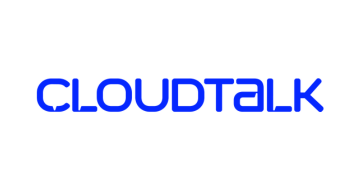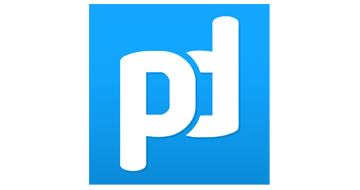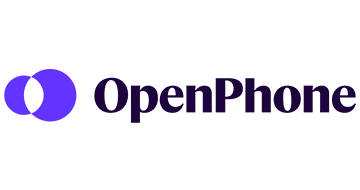
| Starting price | $19/mo |
|---|---|
| Free trial | Yes (7 days) |
| Free version | No |
Telephony software enables seamless communication and improved call management for your business. It replaces traditional phone lines and hardware-based systems with software-driven solutions and provides a variety of features to optimize call management, improve customer interaction, and increase overall communications efficiency.
Find the perfect telephony software for efficient business communication. Discover the best value solutions here.
Looking for a top-notch telephony software? Check out our list to find the leading solutions that streamline communications, improve call management, and drive your business forward. Browse our selection to find the perfect telephony software to meet the unique needs of your business.

| Starting price | $19/mo |
|---|---|
| Free trial | Yes (7 days) |
| Free version | No |

| Starting Price | $7.49/mo |
|---|---|
| Pricing Model | Per credit or contact |
| Free Trial | Yes |
| Free Version | No |

| Starting price | $29 /mo |
|---|---|
| Pricing model | Per Toll-free |
| Free Trial | No |
| Free Version | No |

| Starting price | $25/mo |
|---|---|
| Free trial | Yes, 14 days |
| Free version | No |

| Starting Price | $15.00/mo |
|---|---|
| Pricing Model | Per User |
| Free Trial | Yes |
| Free Version | No |
| Starting price | $15/mo |
|---|---|
| Pricing model | Per Agent, Subscriber based |
| Free Trial | Yes |
| Free Version | No |

| Starting Price | $10 per user/month |
|---|---|
| Pricing Model | Per User |
| Free Trial | Yes |
| Free Version | No |
Telephony software represents the backbone of modern business communications, serving as a sophisticated system that manages calls and orchestrates conversations with customers across multiple channels.
This comprehensive technology suite combines essential features like call routing, automated attendants, and advanced analytics to help organizations streamline their communication processes while dramatically improving efficiency and productivity.
The software essentially functions as a bridge between traditional telephone networks and computer-based systems, enabling businesses to leverage the power of internet-based communications while maintaining compatibility with existing phone infrastructure.
Most solutions integrate seamlessly with contact center software and CRM platforms, creating a unified communication ecosystem that enhances customer interactions.
Modern telephony systems function as sophisticated interfaces between traditional telephone networks and computer networks like the Internet. The technology leverages a public switched telephone network (PSTN) as its communication backbone, connecting public networks globally through an intricate series of interconnected switches.
The software manages incoming and outgoing calls through a media gateway controller (MGC), which converts between different technologies by separating call signaling from media streams. This separation allows for more efficient routing of calls based on specific business rules while ensuring high-quality transmission of audio and video content.
Beyond basic call management, telephony applications transform laptops and mobile devices into powerful business phones with multiple lines and extensions. This flexibility enables remote work capabilities while maintaining professional communication standards. The system can also integrate with your organization’s customer relationship management software to create a comprehensive view of customer interactions across all touchpoints.
Call recording functionality serves as a critical component for maintaining conversation archives and ensuring quality standards. This feature enables businesses to store audio files for training purposes, dispute resolution, and performance evaluation. Advanced systems provide searchable transcriptions and automated quality scoring based on predefined criteria.
Sophisticated call routing capabilities ensure incoming calls reach the most appropriate agent or department based on various criteria, including caller location, time of day, agent expertise, or customer history. Automatic call distribution (ACD) systems balance workloads across available agents, reducing wait times and improving customer satisfaction.
Modern telephony solutions integrate seamlessly with popular CRM platforms including Salesforce, HubSpot, and Zendesk. This integration provides agents with complete customer context before answering calls, including purchase history, previous interactions, and customer preferences. The result is more personalized service and improved first-call resolution rates.
IVR capabilities allow customers to navigate through menu options using voice commands or keypad inputs, enabling self-service options for common inquiries while routing complex issues to appropriate specialists. Advanced IVR systems incorporate natural language processing to understand customer intent more accurately.
Comprehensive analytics dashboards provide insights into call volume patterns, agent performance metrics, customer satisfaction scores, and system efficiency. These reports enable data-driven decisions about staffing levels, training needs, and process improvements.
| Plan Type | Price Range | Key Features | Best For |
|---|---|---|---|
| Free/Basic | $0-$15/user/month | Basic calling, voicemail, call forwarding | Small teams, startups |
| Professional | $25-$45/user/month | Advanced routing, CRM integration, analytics | Growing businesses |
| Enterprise | $50-$100+/user/month | Custom features, unlimited extensions, priority support | Large organizations |
| Contact Center | $75-$150+/agent/month | ACD, workforce management, quality monitoring | Call centers |
Pricing structures vary significantly based on feature requirements and user counts. Most providers offer tiered pricing models that scale with business growth, eliminating the need for major infrastructure investments. Enterprise clients often benefit from volume discounts and custom pricing arrangements.
Companies with dedicated customer support teams gain substantial advantages from telephony systems that track customer interactions and provide predictive analytics. These tools help identify trends in customer issues and optimize response strategies, leading to improved satisfaction scores and reduced resolution times.
Sales organizations benefit from telephony integration with CRM systems, enabling representatives to access comprehensive customer databases during calls. This integration provides historical sales data, communication preferences, and buying patterns that inform more effective sales conversations.
SMEs particularly benefit from cloud-based telephony solutions that eliminate the need for expensive on-premises hardware while providing enterprise-grade features. The scalability of these systems allows businesses to add users and features as they grow without significant infrastructure investments.
Companies with distributed teams rely on telephony software to maintain consistent communication standards across all locations. Mobile applications and softphone capabilities ensure employees can maintain professional phone presence regardless of their physical location.
Session Initiation Protocol (SIP) based solutions provide maximum flexibility for large organizations by enabling VoIP technology across multiple devices and locations. These systems support seamless mobility, allowing employees to take calls on desk phones, smartphones, or computers while maintaining consistent features and call quality.
Cloud-hosted telephony services represent the most popular choice for businesses with fewer than 100 employees. These solutions eliminate hardware maintenance requirements while providing scalability and reliability through third-party providers. Hosted services typically offer faster deployment times and lower upfront costs.
VoIP technology converts voice signals into digital data that travels over internet connections, providing cost savings compared to traditional phone lines. These systems offer advanced features like video calling, screen sharing, and integration with communication and collaboration software.
| Feature Category | Traditional Systems | Modern Telephony Software |
|---|---|---|
| Call Management | Basic routing and holding | AI-powered routing, queue management |
| Integration | Limited third-party options | Extensive CRM, helpdesk integration |
| Mobility | Desk phone only | Multi-device, mobile apps |
| Analytics | Basic call logs | Real-time dashboards, predictive analytics |
| Scalability | Hardware-dependent | Cloud-based, instant scaling |
| Cost Structure | High upfront investment | Subscription-based, predictable costs |
| Maintenance | On-site technical support | Provider-managed updates |
The shift toward mobile-centric business operations drives development of sophisticated mobile applications that provide complete telephony functionality on smartphones and tablets. These apps enable features like call recording, voicemail transcription, and CRM integration while maintaining security standards required for business communications.
Modern telephony platforms prioritize seamless integration with existing business tools including CRM software, helpdesk solutions, and marketing automation platforms. These integrations create unified workflows that improve agent efficiency and customer experience consistency.
Artificial intelligence transforms telephony capabilities through features like intelligent call routing, sentiment analysis, automated transcription, and predictive dialing. These technologies reduce manual tasks while providing insights that drive better business outcomes.
Advanced noise cancellation features ensure clear communication in various environments, particularly important for urban locations and home offices. This technology uses machine learning to identify and eliminate background noise while preserving voice clarity.
Successful telephony implementation begins with thorough assessment of current communication needs, growth projections, and integration requirements. Organizations should evaluate existing infrastructure, identify pain points in current systems, and establish clear success metrics for the new solution.
Comprehensive training programs ensure maximum adoption and effectiveness of new telephony systems. Training should cover basic functionality, advanced features, troubleshooting procedures, and integration with existing workflows. Consider creating role-specific training modules for different user groups.
Careful planning of integrations with existing business systems prevents disruptions and ensures seamless data flow. Work with vendors to map integration points, test data synchronization, and establish backup procedures for critical business processes.
Modern telephony systems handle sensitive customer information and business communications, making security a paramount concern. Look for solutions that provide end-to-end encryption, secure authentication protocols, and compliance with industry standards like HIPAA or PCI DSS when applicable.
Regular security audits and updates ensure protection against emerging threats while maintaining system performance. Consider solutions that provide detailed audit logs and monitoring capabilities to track system access and identify potential security issues.
Monitor metrics like call completion rates, audio quality scores, and connection reliability to ensure optimal user experience. These technical metrics directly impact customer satisfaction and business productivity.
Track first-call resolution rates, average call duration, customer satisfaction scores, and callback rates to measure the effectiveness of your telephony system in supporting customer service goals.
Evaluate the broader business impact through metrics like cost per call, agent productivity improvements, and revenue attribution to telephony-enabled interactions. These measurements demonstrate ROI and guide future investment decisions.
Selecting the optimal telephony software requires careful evaluation of business needs, technical requirements, and growth plans. Consider factors like user count, required integrations, compliance requirements, and budget constraints when evaluating options.
Request detailed demonstrations from multiple vendors, focusing on features most critical to your business operations. Pay particular attention to integration capabilities with existing tools like your CRM system and contact management software.
Evaluate vendor support offerings, including implementation assistance, training resources, and ongoing technical support. The quality of vendor support often determines the success of telephony implementations and long-term satisfaction with the solution.
The telephony software landscape continues evolving rapidly, driven by advances in cloud computing, artificial intelligence, and mobile technology. Organizations that invest in modern telephony solutions position themselves for improved customer relationships, enhanced productivity, and sustainable business growth in an increasingly connected world.